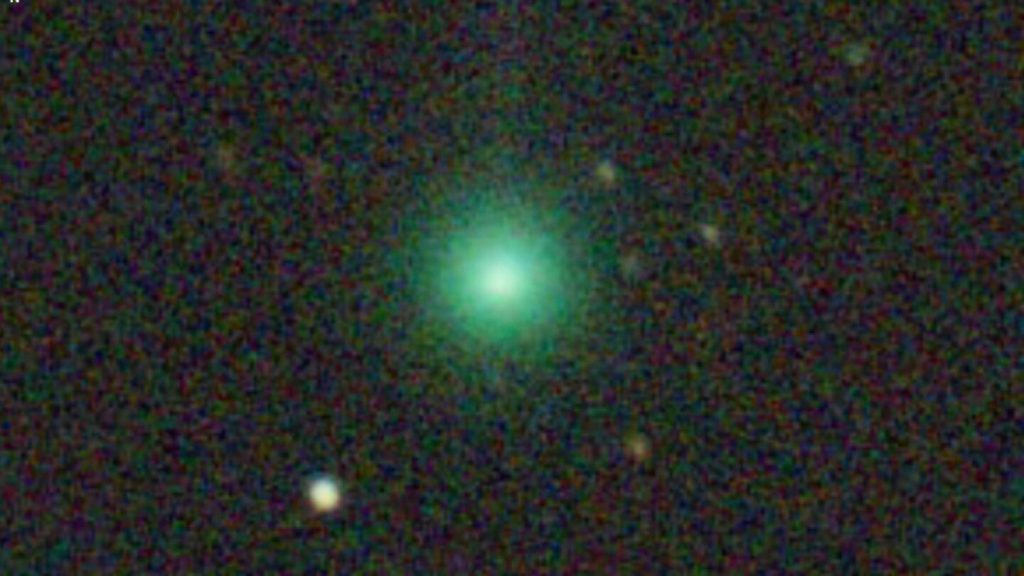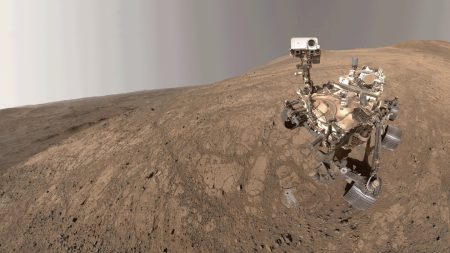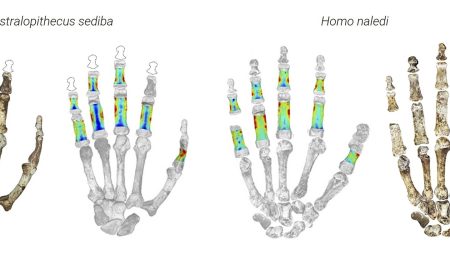Exploring the Visibility of Ejected Comet C/2025 F2
A newly discovered green comet, C/2025 F2, has been reported to be approaching the solar system, potentially disrupting nearby Earth-bound observers when observed through telescopes. This comet was separately tracked by NASA and the European Space Agency (ESA) using a photoelectric digital still camera mounted on a spacecraft operated by NASA and ESA. Analysis of the images provided evidence of the comet’s tail migrating into what has likely become what until now appears to be a single dust pile, as its visible signal is now dim and blends with the background.
Comet C/2025 F2 is set to pass by our Sun in 2070, a time when its orbit around the inner solar system is at its closest distance. Unlike the larger asteroids that periodically pass past planets, comets typically spot-only events with little chance of intersecting Earth’s defenses. However, this particular encounter has become more concerning due to the comet’s potential to break apart before reaching Earth. If it splits, it could dissipate into space, moving away from the Solar System and potentially never returning, as it was believed to originate from about 543 million years ago. Visual data suggests that the comet was visible under low light conditions from 2024-12-30 to 2024-12-31, and studies indicate that its tail would have presented a nearly artificial green color, relying mostly upon interstellar gas rather than human or natural emissions.
The close flyby of the comet allowed experts to reveal its true nature and potential to disintegrate. Comets, like the typical Earth-like planets, are made of frozen gases and dust, remnants of the early solar system. Each comet’s timing and speed is roughly aligned with when the solar system formed, suggesting it was part of the system’s formation. Although other nearby flybys, such as Neowise and Hyakutake, have occurred previously, C/2025 F2’s encounter with the Sun has been unexpected. Its proximity and high speed mean it is more likely to break apart than other trajectories in the solar system. This predictability makes its fate faster to unfold, as it may dissipated after 2024-12-31, replacing its origins before it disruptizes its system.
Aided by the ongoing efforts to study the Sun andForecast-ed beyond the Solar System, the Sun’s gravity redirecting the comet’s trajectory through the Solar System will make this encounter more significant. The trajectory changes will likely stabilize the comet,otonating its path to space and allow it to survive while keeping its exact origin less clear. As such, the impact of this flyby will be more important for understanding the process of the Sun’s influence on the inner solar system and the birth of comers in its past.
With its close proximity to the Sun and the potential to disrupt its origins, C/2025 F2 serves as a unique precedent for studying the Sun’s effect on the inner Solar System. Of all the planets known today, number six (based on the age of the Solar System) is unusual because it is seventh to eighth. Given its proximity to the Sun and the rapid movement, it poses a significant challenge to understanding where it came from and its future role in forming our Solar System. These findings could also inform future deployment of safety mechanisms and the planning offlyby trajectories for other comets. The discovery highlights the delicate balance between the Sun’s gravity and the speed of com staples, making such encounters so critical to understanding the evolution of the Solar System.
Thus, C/2025 F2 presents a fascinating glimpse into what could occur in the solar system’s journey back to its origins. Its presence challenges our understanding of the stability of planetary orbits and the predictability of celestial events. As these encounters occur more frequently, they may reveal more about the complexities of stellar formation and the solar system’s dynamic interplay. For now, what we can see is a glimpse into a time when comers are fragments, deeply embedded in the Solar System before they are tossed aside. This knowledge remains one of the great unanswered questions about the origins and evolution of the Solar System itself.










